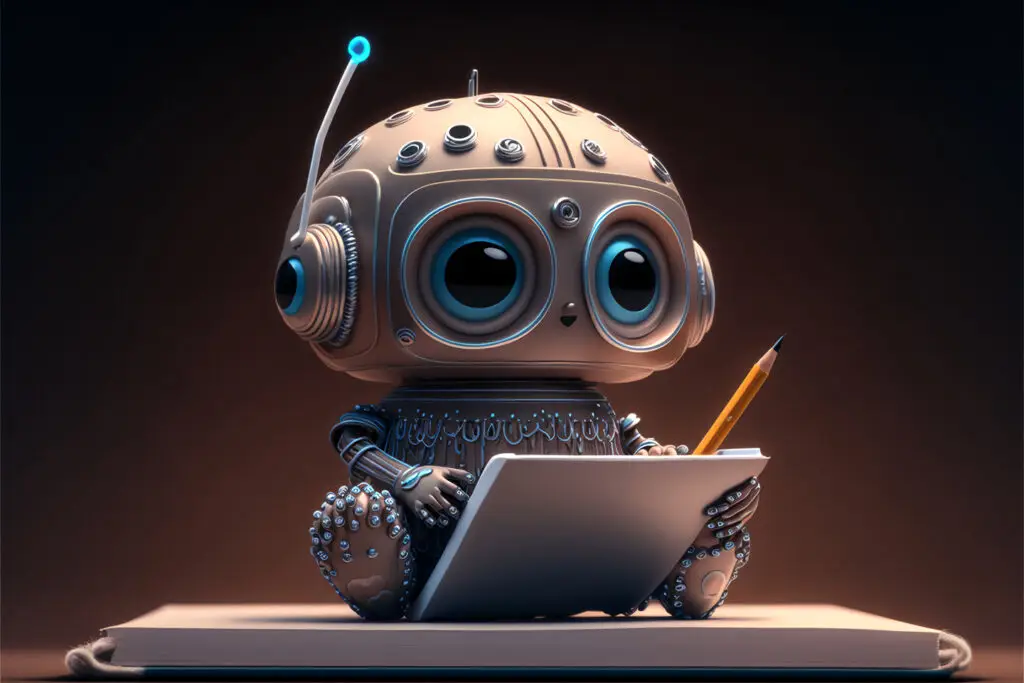
ChatGPT and ChatGPT Plus are on everyone's lips. Almost everyone has probably had their first experience with the smart voice bot by now - be it to formulate texts for presentations, to do research or simply to have emails written. What some people don't know: The AI can also be used to translate natural language into programming code. Will ChatGPT replace the concept of low-code platforms? Or even the flesh-and-blood programmer in the end?
The development of artificial intelligence (AI) from OpenAI is progressing rapidly: just six months ago, the US company revolutionized the IT world with ChatGPT (GPT = Generative Pretrained Transformer), the most powerful voice bot ever created to date. And this bot learns and learns. After the ChatGPT prototype, which was still based on the generative language model GPT-3.5, OpenAI is now on the market with its paid successor ChatGPT Plus. The bot has now been trained on a more powerful language model (GPT-4) which, according to OpenAI, is even more creative and cooperative and can solve complex problems more easily.
Apps by voice command
But GPT-4 can not only formulate texts. The AI is also able to translate verbal instructions into program code in various programming languages. In short: users can generate code by voice command. All the user has to do is tell the system what the code should be able to do and in which programming language it should be executed. Developer Morton Jost recently created a complete iPhone app in this way using Apple's SwiftUI framework. His command: "Hey gpt4, make me an iPhone app that recommends 5 new movies + trailers + where to watch them every day." No sooner said than done. The system first generated pseudocode and then generated an entire SwiftUI lifecycle app - albeit with a few bugs at first.
So if ChatGPT can program applications by voice command, the question inevitably arises as to the future role of low-code platforms - those systems that allow non-programmers to create simple apps from ready-made building blocks and logic. Will ChatGPT possibly replace low code? Experts say no. For one thing, the results of the bot are only partially reliable for both code and language. It therefore requires in-depth programming knowledge to recognize what the AI is outputting correctly and what is not. And the detailed work involved in creating an app is also not feasible for a layperson. ChatGPT itself answers the question as follows:
"While ChatGPT can help generate code or answer development questions, there are important differences between a language model like ChatGPT and a low-code platform. The latter provide a higher level of abstraction, which means that developers do not necessarily need to have extensive knowledge of programming to create applications. ChatGPT can be used as a support or tool in low code platforms. It can be useful to generate or support some parts of the code, but it cannot cover all aspects of application development. Complex tasks still require an understanding of programming, architecture and other technical aspects covered by low code platforms."
ChatGPT therefore does not see itself as a competitor to low code, but as a useful addition. Or to put it in the words of the bot:
"ChatGPT does not represent the end of low-code platforms, but rather extends their functionality."
Voice bot with a future
Despite all the skepticism and (still) subdued expectations, ChatGPT has programmers' heads spinning all over the world to develop future application scenarios for AI. At the Hannover Messe trade fair in April, for example, Siemens announced a collaboration with the software company Microsoft - with the aim of increasing the use of AI in the control of industrial production processes. Among other things, the partners are working on a concept that will enable the automated creation of programming code for industrial control computers using ChatGPT and other AI services. Employees would only have to tell the machines what to do in English or German and the computers would then independently create the corresponding codes in the PLC programming language (PLC = programmable logic controller). Siemens does not see industrial AI solutions as a replacement, but in any case as a valuable support for IT experts. Because when the computer takes over the (simple) coding, the developers have more time to devote to more complex tasks.
Support in the ERP environment
ChatGPT can also provide valuable services in the ERP environment, for example in customer communication. To do this, the bot is connected to a CRM or ERP system via interfaces (API, Application Programming Interface). In the event of questions or problems, ChatGPT then automatically helps the customer to find a solution, for example if a machine malfunctions. This relieves the burden on on-site maintenance teams.
If the story continues, ChatGPT or comparable AI models could also greatly simplify and speed up the customizing of ERP systems in the future - for example, by allowing the user to independently insert check steps when entering customer orders, create code for connecting external cloud services or add additional fields and logic to the customer base using voice commands.
Chatbots could also be used to analyze data in the ERP system in order to identify trends in sales figures or create forecasts for future sales success.
But despite all the euphoria, there will probably be no future without programmers. Nevertheless, the potential of ChatGPT is enormous. And the clever bot probably really does have what it takes to revolutionize the world of IT and therefore also the world of ERP in the long term.
What does the jump from GPT-3 to GPT-4 mean?
The paid version ChatGPT Plus, which is based on the new GPT-4 language model, has been on the market since March. The standalone AI OpenAI Codex, which was specifically designed to develop programming code using voice commands, no longer exists in this form. It is now part of GPT-4.
GPT-4 uses more data and more calculations to create even more sophisticated and powerful language models. According to Open AI, the new version is therefore significantly superior to its predecessor: Among other things, GPT-4 is said to be 40 percent more likely to give factual answers than GPT-3.5, while at the same time the probability of it responding to illicit questions is reduced by 82 percent. At around 24,000 words, GPT-4 analyzes and writes four times as long texts as GPT-3. Users can also prescribe the exact use or style of use of a text to the AI.


